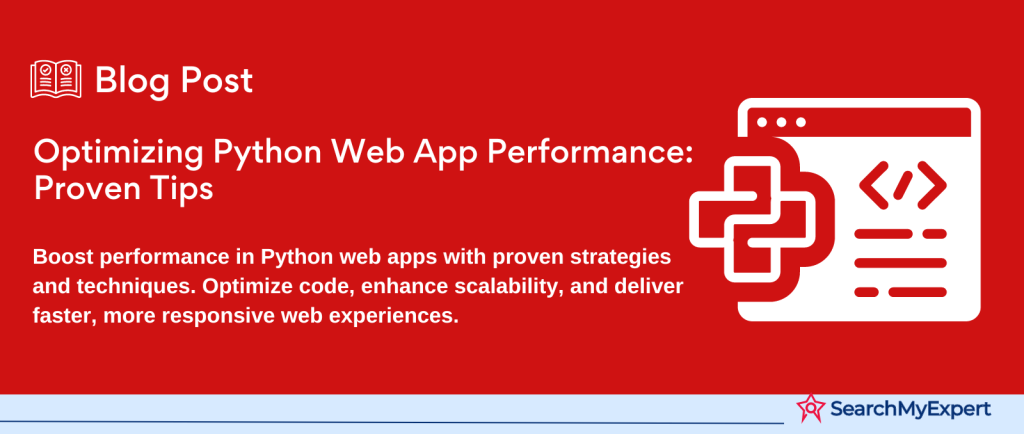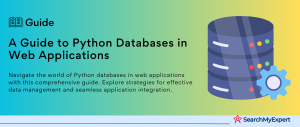Importance of Performance in Python Web Applications
Unleashing the Power of Performance: Why It Matters in Python Web Apps
In the fast-paced digital world, performance is the kingpin in the realm of web applications. This is particularly true for Python web apps, where the balance of power lies in swift and efficient performance. Let’s dive into why enhancing performance in Python web applications is not just a luxury, but a necessity.
The Perks of Enhanced Performance
- Elevated User Experience: Imagine a web app as smooth as silk, responding in the blink of an eye. That’s what top-notch performance delivers, keeping users engaged and satisfied.
- Expanding User Base: Speed and efficiency are magnets for users. A high-performing Python web app attracts and retains a broader audience.
- Cost Optimization:
Efficient performance means optimized resource utilization, leading to cost savings. It’s like getting more bang for your buck!
The Delicate Dance: Performance vs. Development Time/Complexity
However, it’s not all sunshine and rainbows. There’s a trade-off – enhancing performance often means more complex coding and longer development time. It’s a tightrope walk between achieving peak performance and managing development resources effectively.
Identifying Bottlenecks and Measuring Performance in Python Web Apps
Pinpointing the Culprits: Identifying Performance Bottlenecks
- Profiling: It’s like detective work for your code! Profiling involves examining your Python app to
pinpoint slower sections. Imagine it as a magnifying glass, zooming in on the sluggish parts. - Tracing:
Tracing tracks the journey of requests through your app. It’s like following breadcrumbs to see where things might be slowing down. - Monitoring Tools:
These are the guardians of performance. Monitoring tools constantly watch over your app, alerting you to any performance dips.
Key Performance Metrics: What to Keep an Eye On
- Response Time: How long does your app take to respond to a request? Faster is always better!
- Resource Usage:
Keep tabs on CPU and memory usage. Efficient resource use means a smoother-running app. - Throughput: This is all about volume – how many requests can your app handle at once?
Armory for Performance: Profiling Tools
- cProfile: A Pythonista’s best friend for performance tuning. cProfile helps you see what’s eating up your runtime.
- Memory Profilers:
Memory usage out of control? Memory profilers help you track it down, ensuring your app isn’t a memory hog.
By mastering these tools and metrics, you can transform your Python web app into a high-performance machine, delighting users and stakeholders alike. Next, we’ll explore how to effectively utilize these tools for maximum impact.
Optimization Techniques at the Code Level in Python Web Apps
Streamlining Code Structure: Less is More
- Reducing Loop Iterations:
Think of loops like a race track. The fewer laps (iterations), the faster you finish. Trim down those loops! - Minimizing Redundant Calculations:
Avoid déjà vu in your code. If you’ve calculated something once, don’t do it again. Store it, and move on!
Data Structures & Algorithms: The Backbone of Efficiency
- Using NumPy Arrays: Swap out lists for NumPy arrays in your Python code. They’re like supercharged lists, built for speed and efficiency.
- Appropriate Sorting Techniques:
Picking the right sorting algorithm is like choosing the right tool for the job. Some are faster and more suited to specific data types.
Mastering String Manipulation: Every Character Counts
- Interning Strings:
Python’s way of avoiding duplicate strings. It’s like having a VIP pass for frequently used strings, reducing memory usage. - Using Join Instead of Concatenation:
Think of string concatenation as a traffic jam. join is the express lane, merging strings faster and more efficiently.
By implementing these code-level optimizations, your Python web app will not only run faster but also consume fewer resources. It’s like giving your app a performance-boosting superpower!
Leveraging Caching and Database Strategies in Python Web Apps
Caching Mechanisms: Speeding Up Data Retrieval
- Browser Caching: Think of it as a local treasure chest, storing resources right in the user’s browser. Quicker access, happier users!
- In-Memory Caching with Redis or Memcached: These are your high-speed memory banks, storing data in RAM for lightning-fast retrieval.
Database Optimization Techniques: The Art of Fine-Tuning
- Query Optimization: It’s like streamlining a conversation. Make your database queries as efficient and to the point as possible.
- Indexing:
Imagine a giant library. Indexes are the librarian, guiding you to the right data shelf quickly. - Database Clustering: This is about teamwork. Clustering divides the data workload across multiple servers, improving performance and reliability.
Choosing the Right Database: NoSQL vs. Relational Databases
- NoSQL Databases:
Flexible, scalable, and great for handling large volumes of unstructured data. Perfect for dynamic, evolving data needs. - Relational Databases:
Structured, organized, and fantastic for complex queries. Ideal when data integrity and relationships are crucial.
Implementing these caching and database strategies can drastically improve the performance and scalability of your Python web applications. It’s about making smart choices that align with your app’s needs and user expectations.
Utilizing Asynchronous and Concurrent Programming in Python Web Apps
Embracing Asynchronous Frameworks: asyncio and Tornado
- asyncio:
Picture a juggler effortlessly tossing multiple balls in the air. That’s asyncio handling multiple operations without breaking a sweat. - Tornado:
It’s like a powerful wind, swiftly managing thousands of open connections simultaneously, perfect for real-time web services.
The Benefits of Asynchronous Code for I/O Intensive Tasks
- Efficiency in Database Access and Network Calls: Asynchronous code is like having VIP access in a crowded event. While others wait, it moves on to the next task, avoiding idle time.
- Enhanced User Experience: Faster responses mean happier users. It’s all about keeping the ball rolling smoothly and swiftly.
Implementing Asynchronous Tasks: Queues and Thread Pools
- Using Queues: Think of queues as organized lines at a ticket counter. Each task waits its turn, ensuring orderly processing without overloading the system.
- Leveraging Thread Pools: Thread pools are like a team of workers, each handling a part of the job. They efficiently manage multiple tasks, balancing the workload.
By integrating asynchronous and concurrent programming techniques, your Python web apps can achieve remarkable performance improvements, particularly in handling multiple requests and I/O-intensive operations.
Optimizing the Application Stack and Infrastructure in Python Web Apps
Choosing Optimized Web Frameworks: Django and Flask
- Django: It’s like a Swiss Army knife for web developers. Comprehensive, with built-in features for everything from ORM to security. Ideal for heavy-duty apps.
- Flask: Think of Flask as a nimble ninja. Lightweight, flexible, and perfect for smaller applications or when you need more control.
Balancing the Load: Strategies for High Availability and Scalability
- Load Balancing: It’s like a traffic cop, directing requests to different servers to prevent overloads and ensure smooth traffic flow.
- Smart Deployment Strategies:
Plan deployments like a chess game. Each move should enhance availability and scalability, adapting to your app’s growing needs.
Embracing Containerization with Docker
- Efficient Resource Utilization:
Docker containers are like well-organized packing boxes. They contain everything your app needs, using resources more efficiently. - Simplified Deployment: Imagine being able to move your entire setup from one computer to another effortlessly. That’s Docker, making deployments a breeze.
Implementing these application stack and infrastructure optimizations can significantly boost the performance, reliability, and scalability of your Python web apps. It’s about building a robust foundation that can support your app’s growth and user demand.
Ongoing Performance Monitoring and Maintenance in Python Web Apps
The Vital Role of Continuous Monitoring and Performance Testing
- Never-ending Vigilance:
Think of continuous monitoring as your app’s personal bodyguard, always on the lookout for performance dips or issues. - Regular Performance Testing: It’s like having regular health check-ups for your app. Catch problems early, fix them fast!
Automating Performance Tests and Alerts: Your Digital Sentry
- Automated Performance Tests: Set up automated tests as your first line of defense. They tirelessly ensure every aspect of your app is running smoothly.
- Proactive Alerts:
These are your early warning systems. Get notified the moment something goes awry, enabling swift action.
Setting and Reviewing Performance Goals: Charting the Path to Success
- Establish Clear Performance Goals: It’s like setting GPS coordinates for a journey. Know where you’re heading performance-wise.
- Regular Progress Reviews: Periodically check your map. Are you on course? Adjust as needed to keep your app’s performance on track.
By embracing ongoing performance monitoring and maintenance, your Python web app remains not just functional but exceptional, adapting and evolving to meet user demands and technological advancements.
Conclusion
Improving the performance of Python web applications is crucial for delivering a seamless user experience. By implementing the strategies and techniques discussed in this article, you can optimize your web apps and make them faster and more efficient. From code optimization to choosing the right tools, these insights will help you achieve better performance. Keep exploring our resources for more insights on software development companies in the B2B marketplace.
Redefine your digital landscape with Python Development Service Firms.
Table of Contents
Toggle






